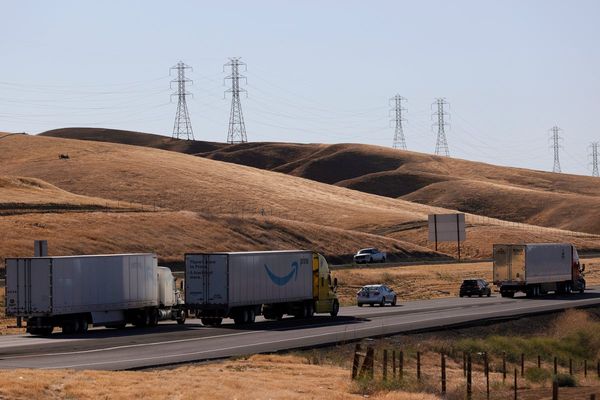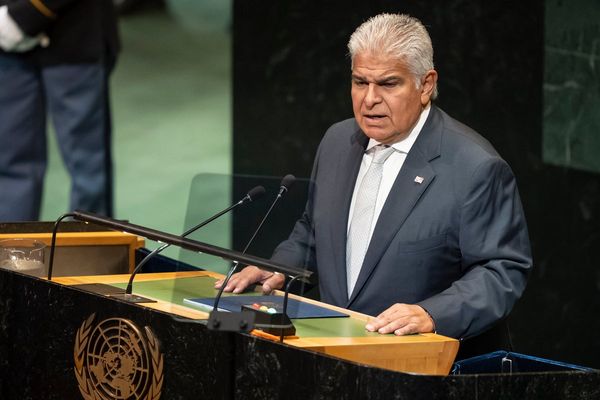
Alcoa’s plan to vastly expand its strip mining of forest near Perth’s dams poses a high risk to the water supply for the city’s 2.3 million people, according to global engineering consultancy GHD.
The US aluminium producer commissioned the detailed analysis as part of its bid for approval to mine an additional 67 sq km of jarrah forest for bauxite – the source material for aluminium.
GHD identified 22 pathways for Alcoa’s mining to contaminate dams inland of Perth and concluded that all but one of them presented a high risk.
The triple threats to the water supply are contamination of the dams by pathogens from sewage, hydrocarbons from oil spills (both from Alcoa’s mining) or simply excessive soil washing into the dam, which makes the water unclear, rendering water treatment plants ineffective.
Sign up: AU Breaking News email
Extensive reporting has documented how Alcoa’s wholesale clearing of the forest and tardy rehabilitation after mining have increased the open area at risk of significant runoff, while its preventive drainage works have a history of frequent failures.
The GHD study of Alcoa’s expansion reinforces concerns of the state-owned Water Corporation, which regards contamination of its reservoirs from Alcoa’s current mining as certain.
The utility faces a bill of $3.25bn if it has to upgrade water treatment plants for all dams where Alcoa is now mining.
If the crucial Serpentine Pipehead dam is contaminated, more than 100,000 households could be consuming contaminated water within six hours. Within weeks, Perth and Western Australia’s South West could face water restrictions.
The WA Forest Alliance director, Jess Boyce, said the study showed there should be an immediate ban on mining in reservoir protection zones, which extend 2km around dams, and a complete phase-out of mining in water catchments over the next few years.
“This move would not only protect critical drinking water supplies for WA but also strong forest habitat for threatened plants and animals, including black cockatoos and quokkas, all of which are suffering in a changing climate,” she said.
Even without mining, the highly biodiverse northern jarrah forest ecosystem is at risk of collapse from hotter and drier conditions with more fires, according to a 2022 assessment by the UN Intergovernmental Panel on Climate Change. Boyce called for a transition package for affected communities. The WA government has a $547m transition package under way at the coalmining town of Collie, where it will shut two coal-fired power stations by 2029.
Alcoa depends on WA, where it employs about 4,000 people. It extracts three-quarters of its global bauxite production from the jarrah forest that is then processed into alumina – the feedstock for aluminium smelters – at refineries at Pinjarra and Wagerup.
For six decades, the $12bn company has mined the jarrah forest shielded from regular environmental oversight by a legislated agreement with the state.
However, it is now facing unprecedented scrutiny on two fronts.
The northwards march of its mining has reached the edge of Serpentine Dam that supplies almost a fifth of Perth’s water, and alarmed government authorities. Now it wants access to the forest on the other side of the dam.
WA’s independent Environmental Protection Authority will assess both Alcoa’s current mining and its proposed expansion after public comments on its plans close on Thursday.
GHD’s damning finding appeared on page 103 of one of 68 documents appended to 23 main reports Alcoa submitted to the EPA.
As well as concerns about the water supply, Alcoa is having to defend its record of not completing rehabilitation a single hectare of the 280 sq km of forest it has cleared since 1963.
In late 2023, the WA Labor government stepped in to allow Alcoa to keep mining while the WA EPA assessed its current operations.
It did so despite warnings from Water Corporation and its Department of Water and Environmental Regulation, which wrote that Alcoa’s plan “lacks the clarity and coherence necessary” and rejected it “in its entirety”.
GHD followed a guideline from WA’s environment regulator to assess the risk to the water supply from Alcoa’s mining.
It identified seven pathways for pathogens to enter the water supply, each with catastrophic consequences, defined as a major impact on a large population, but these would be rare, occurring only in exceptional circumstances.
An Alcoa spokesman said the guideline recommended consequence levels of “catastrophic” for pathogens, and “major” for hydrocarbons and turbidity.
“Under the risk framework, this level of consequence is deemed to have a minimum risk level of ‘high’, regardless of the likelihood,” he said.
Alcoa planned numerous measures to reduce the risks from its expansion, including avoiding mining within 2km of reservoirs and improving drainage works to stop runoff into the dams. GHD concluded these measures reduced the likelihood of 20 of the risks to “rare” and one to “unlikely”.
“Alcoa intends to continue its more than 60-year history of operating without negative impact to Perth’s drinking water supply,” he said.
The EPA is likely to release its advice to the WA environment minister, Matthew Swinbourn, in 2026, who will then decide the conditions placed on Alcoa’s mining based on social and economic factors as well as environmental protection.







